Pride Month Special: Why are we still struggling with LGBTQIA+ representation in cinema? – #BigStory | Hindi Movie News

Cinema, they say, is the mirror of society. Why is it then that movies representing the queer culture either face roadblocks long before they are even released, or do not get their dues upon seeing light of day? Why is it that the community still struggles to find a place like any other for the sole reason of being different? We explore answers to these questions and more in this week’s #BigStory.
The resistance
In 2017, Barry Jenkins’ coming of age drama ‘Moonlight’ became the first LGBTQIA+ movie to win an Oscar for Best Picture. On the home turf, we recently had films like ‘Badhaai Do’, ‘Sheer Qorma’, ‘Shubh Mangal Zyada Saavdhan’, ‘Chandigarh Kare Aashiqui’ among a few others that were welcomed by the audience with open arms. But that’s not the fate of all queer representative cinema.
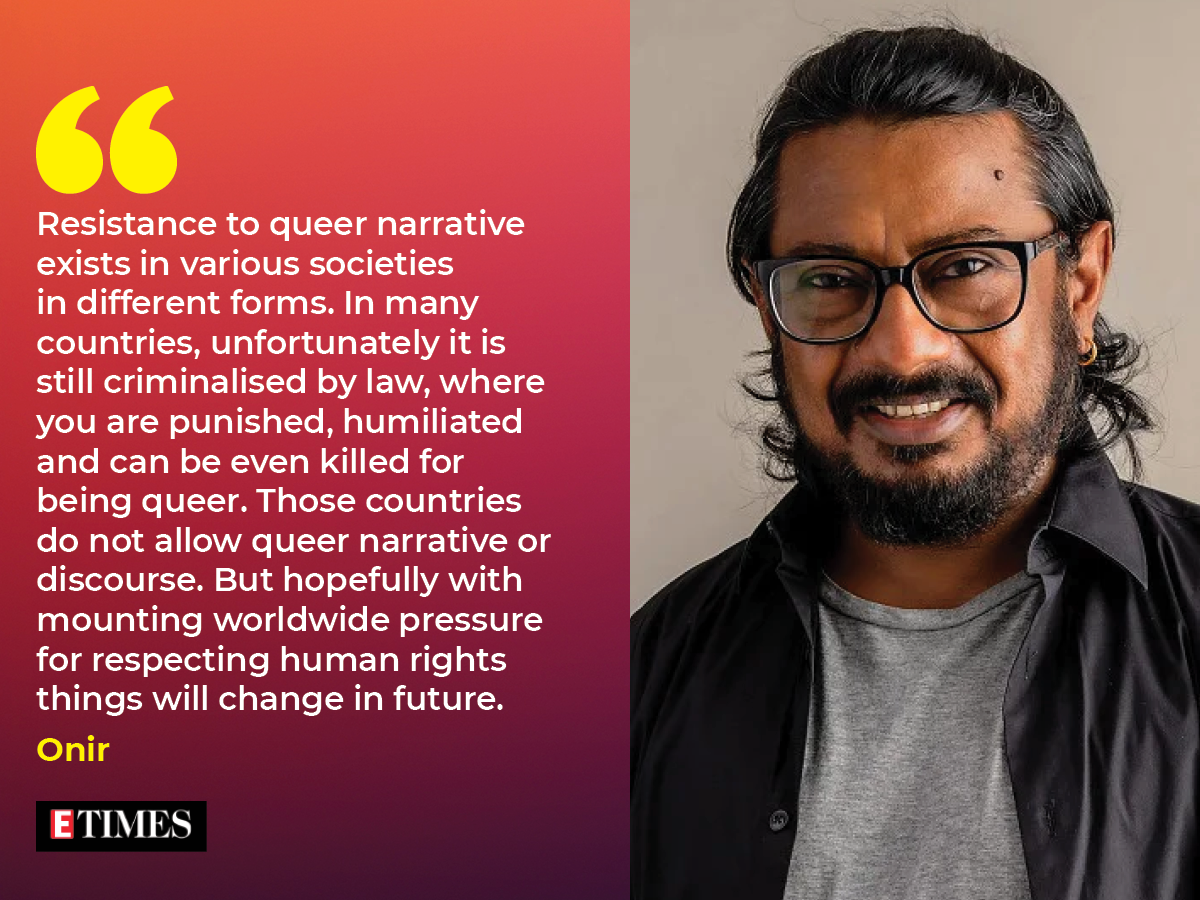
Filmmaker Onir’s ‘We Are’, based on the real life story of Major J Suresh who quit the army as it was no longer plausible for him to come out as a homosexual and remain in the Indian Army, was rejected by the Ministry of Defence. While Onir had sent his film for approval before hitting the shooting floors in March, the script was not approved by the officials. Speaking to ETimes, Onir says, “Resistance to queer narrative exists in various society in different forms. In many countries in the world unfortunately it is still criminalised by law, where is punished, humiliated and can be even killed for being queer. Those countries do not allow queer narrative or discourse. But hopefully with mounting world wide pressure for respecting human rights things will change in future. Just like one hopes that back home the army will accept the queer community amongst the forces. Marriage rights and rights to adoption given to the community. There is no reason why anyone in our country should be deprived of their rights because of gender or sexuality.”
We find stories around transgender in the Ramayana as well as in the Mahabharata. Film historian Amrit Gangar shares an example from the Virata Parva of the Mahabharata when Arjuna took the form of Brihannala (third gender or eunuch) during staying in disguise for a year. “As Brihannala, Arjuna taught dance and music to Uttara, the daughter of King Virata. These stories were popular Indian silent filmmakers in one form or another, e.g. Keechaka Vadham (1917), Urvashi (1921), Virat Parva (1922), etc. These stories continued to be filmed during the talkie era too. The transgender is an integral part of our mythology and there was no social unacceptance of them. Of late, I think since the film ‘My Brother Nikhil’ in 2005, there has been a more openness about LGBTQ films in India,” he says.
In another recent instance, Pixar’s animated feature ‘Lightyear’ was banned by the UAE over its inclusion of a kiss between two lesbian characters. Marvel’s ‘Eternals’ didn’t make it to box-offices in Saudi Arabia, Kuwait, and Qatar as it depicted a same-sex relationship.
Hitesh Kewalya, writer and director of Ayushmann Khurrana and Jitendra Kumar-starrer ‘Shubh Mangal Zyada Saavdhan’ believes films represent a certain strata in the society and every group, even the marginalised ones, need to have a voice. “I don’t agree with this approach (of banning films). If there is any issue, talking about it is necessary to solve it. Just banning it is not right, we should be open about these issues,” he says.
Swara Bhasker does not find these instances surprising. “Middle Eastern countries are not democracies, they call themselves the Islamic state. They go by the Islamic code. So I don’t find it surprising. In secular democracies, where everyone is equal, there should be a higher level of acceptance,” she says.
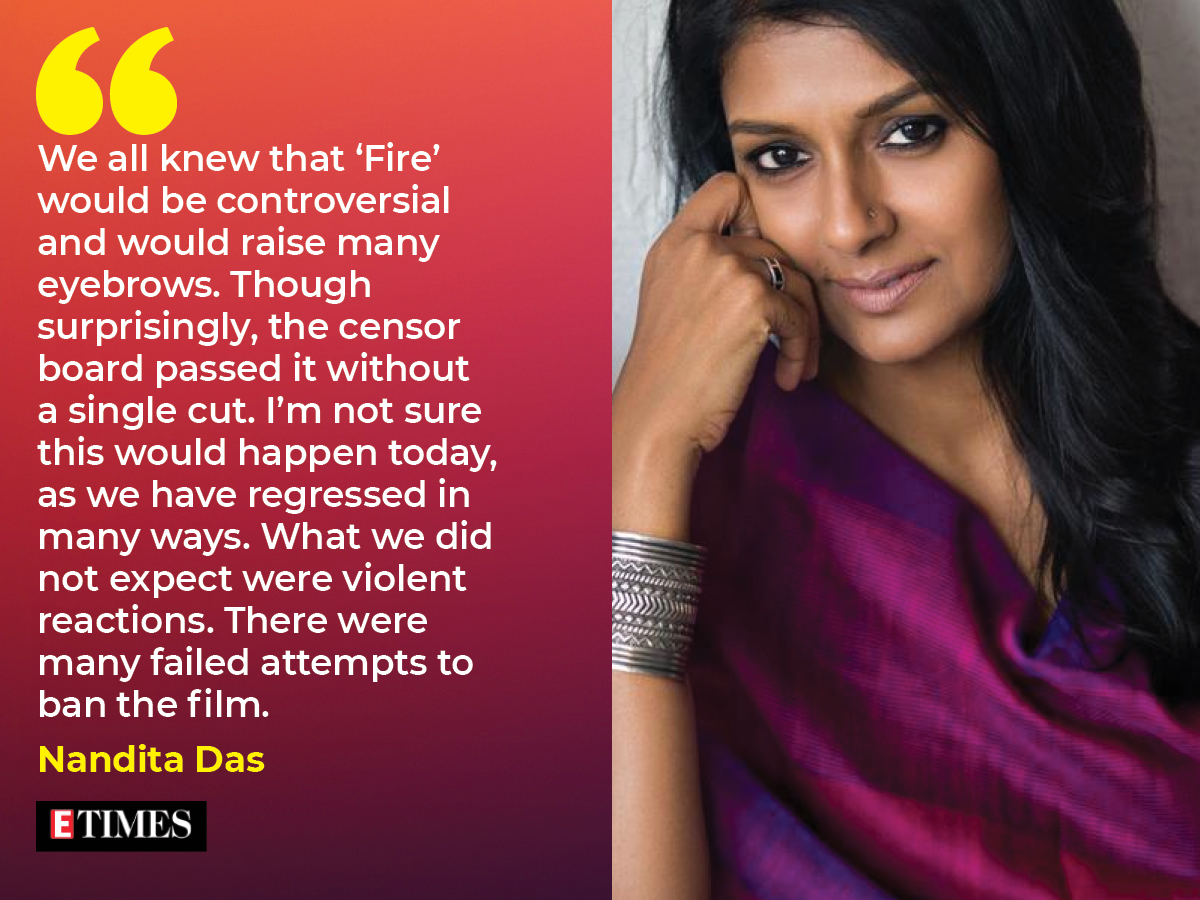
Back in 1996, a similar resistance was witnessed in India towards Deepa Mehta’s ‘Fire’ that depicted an intimate relationship between two women portrayed by Shabana Azmi and Nandita Das. “We all knew that ‘Fire’ would be controversial and would raise many eyebrows. Though surprisingly, the censor board passed it without a single cut. I’m not sure this would happen today, as we have regressed in many ways. What we did not expect were violent reactions, that too after the film was peacefully being screened for three weeks with eighty percent collections. There were many failed attempts to ban the film.” Nandita recalls.
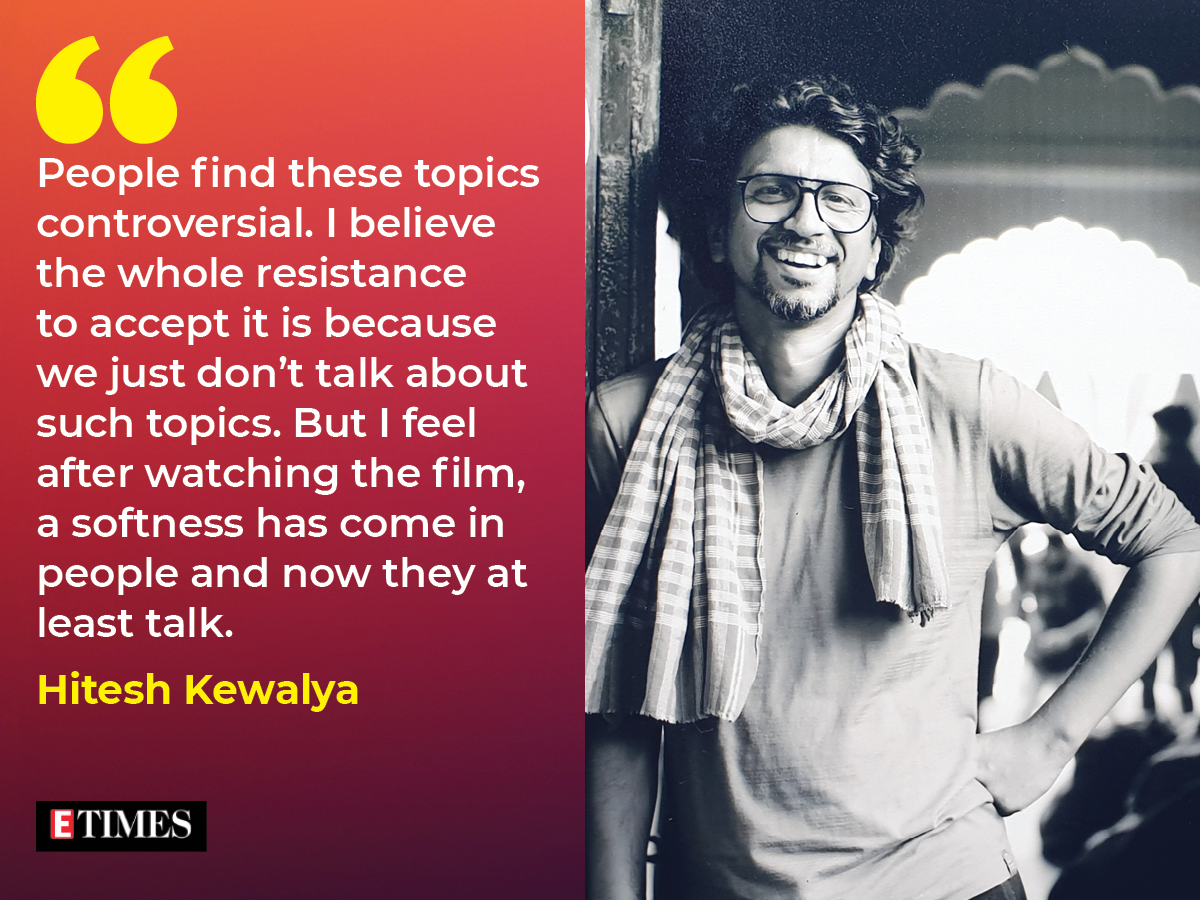
While making ‘Shubh Mangal Zyada Saavdhan’, Hitesh discovered that people believe this kind of thing can happen in somebody else’s house, but not their own. “They find these topics controversial. I believe the whole resistance to accept it is because we just don’t talk about such topics. But I feel after watching the film, a softness has come in people and now they at least talk,” he says.
Swara thinks the situation is a lot better than 10-20 years ago. “At least the films are not getting banned now. Generally speaking, these films are tolerated, not necessarily accepted. We have to move from tolerance to acceptance. Yes, things are changing slowly and things will change…” she adds.
The challenges in queer representation
Making a film representing the queer community comes with its own set of challenges. The first and foremost challenge that Hitesh faced while making ‘Shubh Mangal Zyada Saavdhan’ was dealing with questions like why he chose such a ‘difficult topic’ for his first film, followed by biases like who would want to act in the movie. “All this made me wonder what’s my reason to make this film? What are the biases in my subconscious mind? I wasn’t a part of the LGBTQ community, so there was a constant fear in my mind that I might be misrepresenting something,” he says.
Hitesh still wanted to put forward a point of view that people will relate to. “I was constantly in contact with my friends who were a part of the LGBTQ community. I listened to their childhood problems, their struggles… It was their support that helped me move forward with the script. Once the script was done, people joined the project. I never faced any problems with the producers or the actors,” he adds.
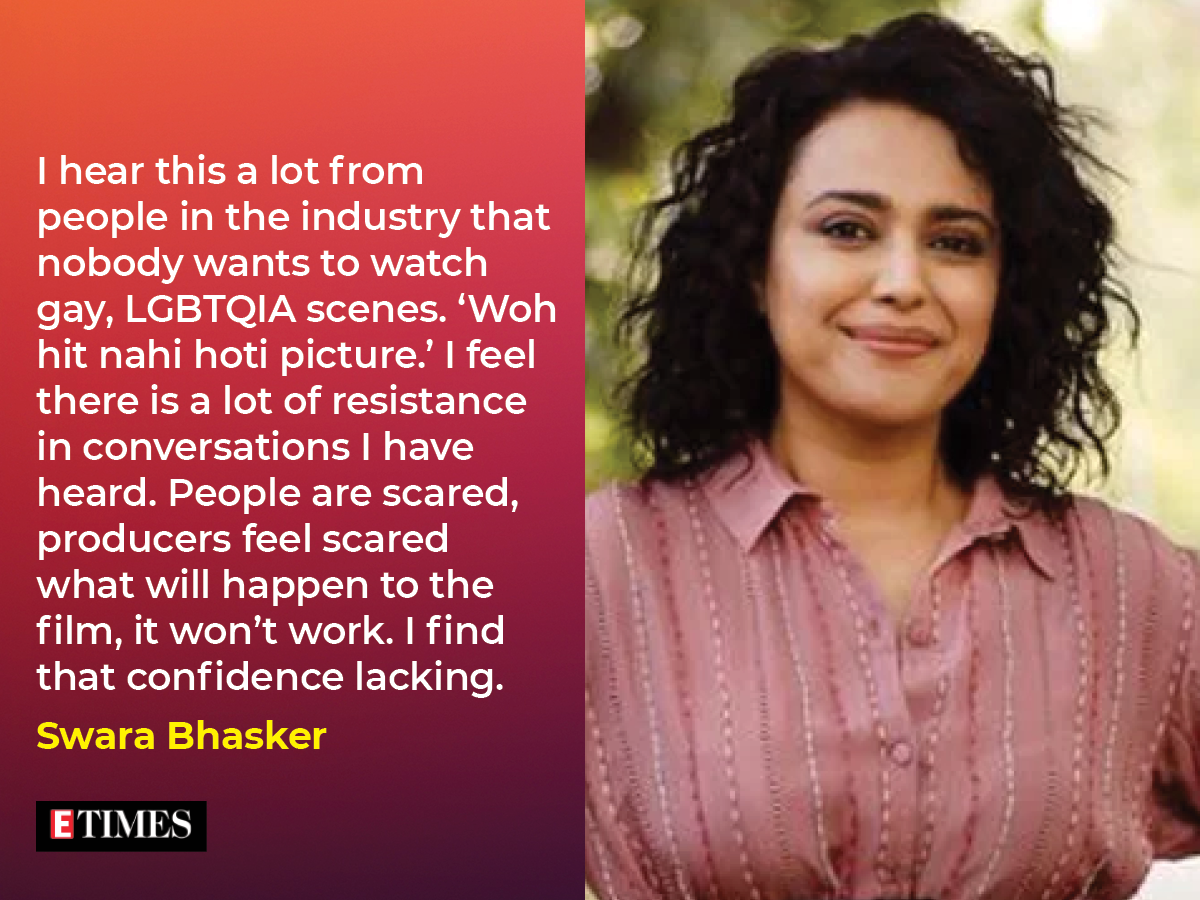
Swara believes there is an onus on these movies to become commercial hits. “I hear this a lot from people in the industry that nobody wants to watch gay, LGBTQIA scenes. ‘Woh hit nahi hoti picture.’ I feel just because something is not hit, that doesn’t mean it’s not justified. That story has a value unto it as a story. I feel there is a lot of resistance in conversations I have heard. People are scared, producers feel scared what will happen to the film, it won’t work. I find that confidence lacking,” she shares.
According to Onir, it has always been a challenge to get the right people to back a story that is ‘honest and beautiful, but not necessarily caters to what is perceived as the only important element… box office and eyeballs.’ Sharing his struggle with his earlier films, he says, “‘My Brother Nikhil’ and ‘I AM’ were films made by us out of passion and love and it was difficult to find finance and distribution. The problem still exists. The need to empower has to go beyond tokenism. Most queer narratives you see are told from a heteronormative gaze. We have to be empowered to tell our stories.”
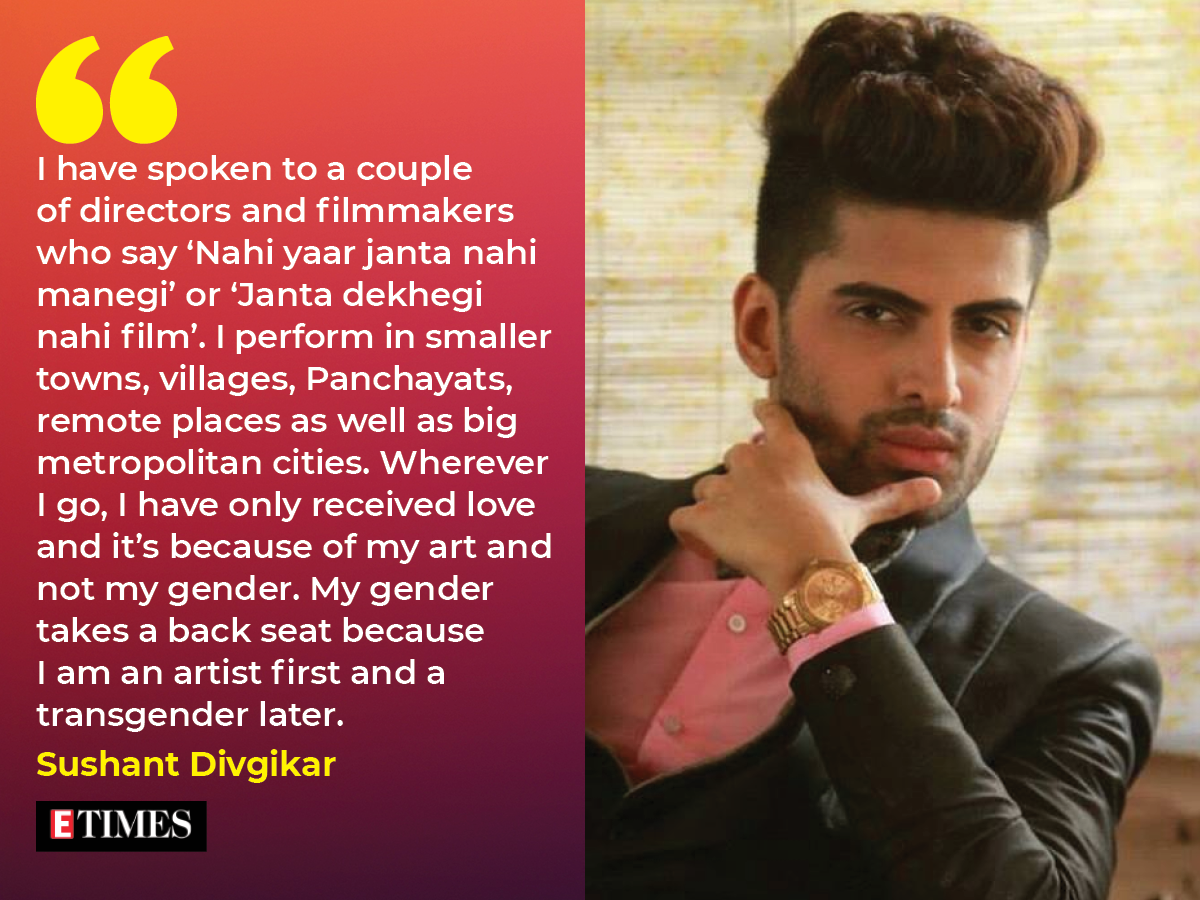
Mumbai based LGBTQIA+ activist and drag artist Sushant Divgikar too echoes the sentiments as they share, “I have spoken to a couple of directors and filmmakers who are my friends and they are like ‘Nahi yaar janta nahi manegi’ or ‘Janta dekhegi nahi film’. I go and perform in smaller towns and even villages and Panchayats in very remote places of the country as well as big metropolitan cities like Mumbai, Bangalore, Kolkata. But everywhere I go, I have only received love and it’s because of my art and not my gender. My gender takes a back seat because I am an artist first and a transgender later. I believe people only need to open up their minds.”
Where are we going wrong?
One cannot deny that all these years while we had LGBTQ representation in cinemas, we also had misrepresentation. “It has been very caricaturist portrayal of LGBTQ characters and that also hasn’t been portrayed or played by actors who are transgender or queer,” says Sushant. “I think it’s quite deplorable or questionable when we say that these are the people who are well travelled or well-educated and say that they are sensitive towards issues like sexual minorities, or the intersection between cast and gender and religion and then they go and then we go and create characters that are very caricaturist. I think it’s insulting to an entire community of people in this country. Yes, LGBTQ community might be considered a miniscule minority but we still make up 15% of India’s population and that’s a huge number. So I think people need to realise that you know these portrayals don’t do any good to us but cause us more harm than anything else,” they add.
Films like ‘Sheer Qorma’, ‘Chandigarh Kare Aashiqui’, ‘Shubh Mangal Zyada Saavdhan’ have been some of the very amazing films in this space. Director of ‘Sheer Qorma’ Faraz Aarif Ansari himself is from the LGBTQ community and gives a chance to LGBTQ artists to portray these characters. And even when they can’t choose queer artists, they choose artists who are vocal about LGBTQ rights.
Not long ago, Vaani Kapoor faced backlash for playing a transgender role in ‘Chandigarh Kare Aashiqui’, but Ayushmann Khurrana was praised for his portal of a gay person in ‘Shubh Mangal Zyada Saavdhan’. Sushant explains the incongruence, “Gender is male or female or trans gender. It’s the orientation that can be heterosexual or homosexual. These are different things. If you are a man you can play straight, bi or gay. But if you are a man, you shouldn’t play a woman because it’s not believable. Similarly, if you are a woman, you shouldn’t play a transgender, let a transgender play that role. Otherwise let a transgender also play a man or a woman’s role. Since we are artists first, why don’t we get a male or female roles?”
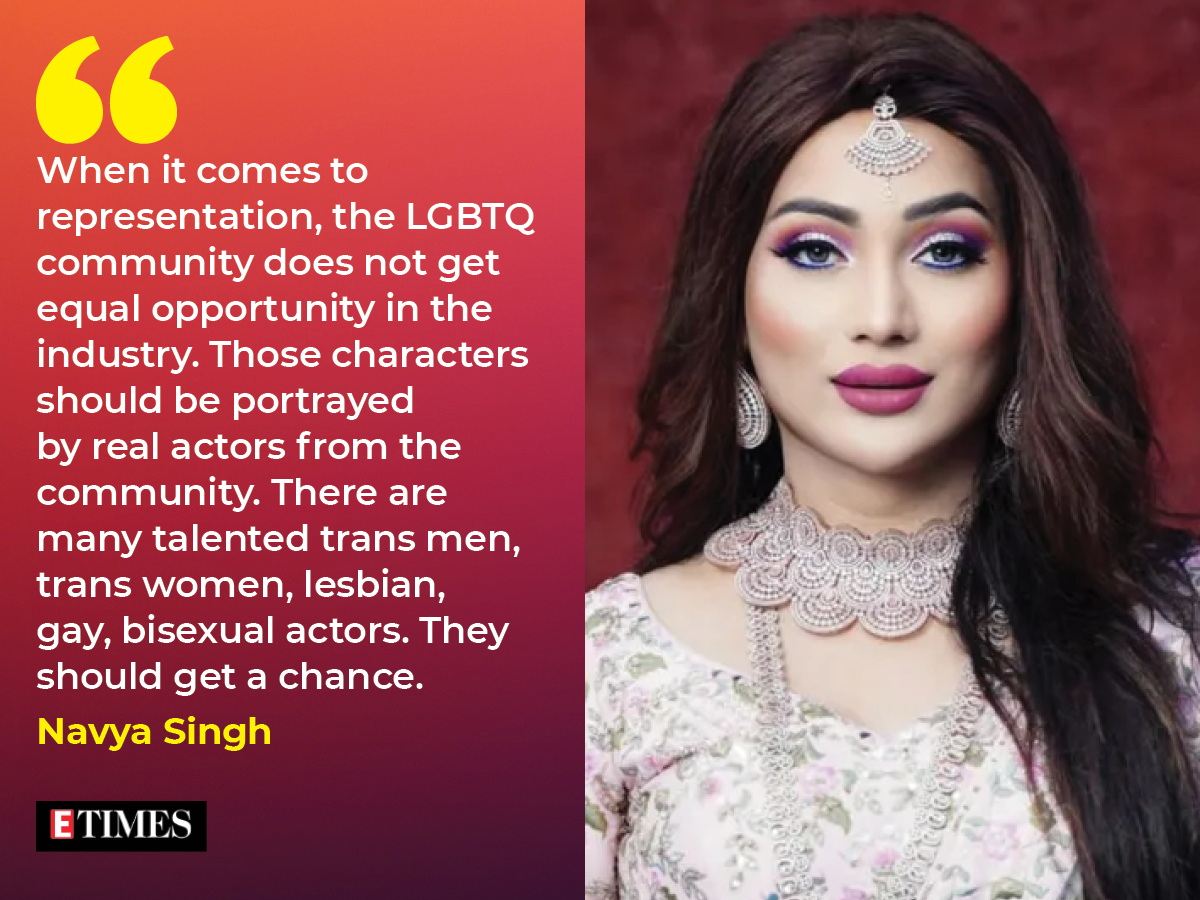
Miss Trans Queen Navya Singh too believes trans artistes should get opportunities. “It is said that cinema is the mirror of society. But when it comes to representation, the LGBTQ community does not get equal opportunity in the industry. Those characters should be portrayed by real actors from the community. There are many talented trans men, trans women, lesbian, gay, bisexual actors. They should get a chance,” she says.
Swara Bhasker too emphasises on the need for self representation of the community. “There was a time when Onir was the one gay director behind the camera. That is also slowly changing with more people behind the camera, where more people are telling queer stories. There is self representation in terms of queer writers, queer directors. That’s where films like Sheer Qorma are important,” she says.
Heralding a change
India as a country is actively working on queer rights and the queer movement is taking centre stage in conversations. “It’s because the policy makers are really listening to us,” says Sushant. “There are a lot of policies that have come from transgender people, and the social justice ministry under the centre and state governments are working towards making it more inclusive in terms of representation, equity and equality,” Sushant adds.
The representation is much better already outside the mainstream cinema, shares Onir. “It’s been four years since the SC of India’s reading down of IPC 377. Mainstream cinema follows the need/expectations of the masses and society at large is still far away from being truly inclusive. But the moment you step away from mainstream you will see much larger representation. Be it the number of home made films thats screened at KASHISH Mumbai International Queer Film Festival , YouTube videos and Reel videos. They are all very important agents of change. Anticlock Films as independent film producers have just completed shooting my next film ‘Pine Cone’ which not only has a queer narrative but perhaps one of the first Hindi feature films to cast a queer person as lead,” he adds.
Actor Gajraj Rao believes that the situation today is very different from what it was 25 years ago. “Things are changing and acceptance is increasing because of the younger generation. They give space to others’ perspectives and are more open minded. If a movie like ‘Shubh Mangal Zyada Saavdhan’ was released 25 years ago, it wouldn’t have been appreciated or even watched by people. But today it’s a very big thing that a family audience came to watch the film, and although some people said that they don’t personally agree with what the movie is trying to convey, they still watched it,” he says.
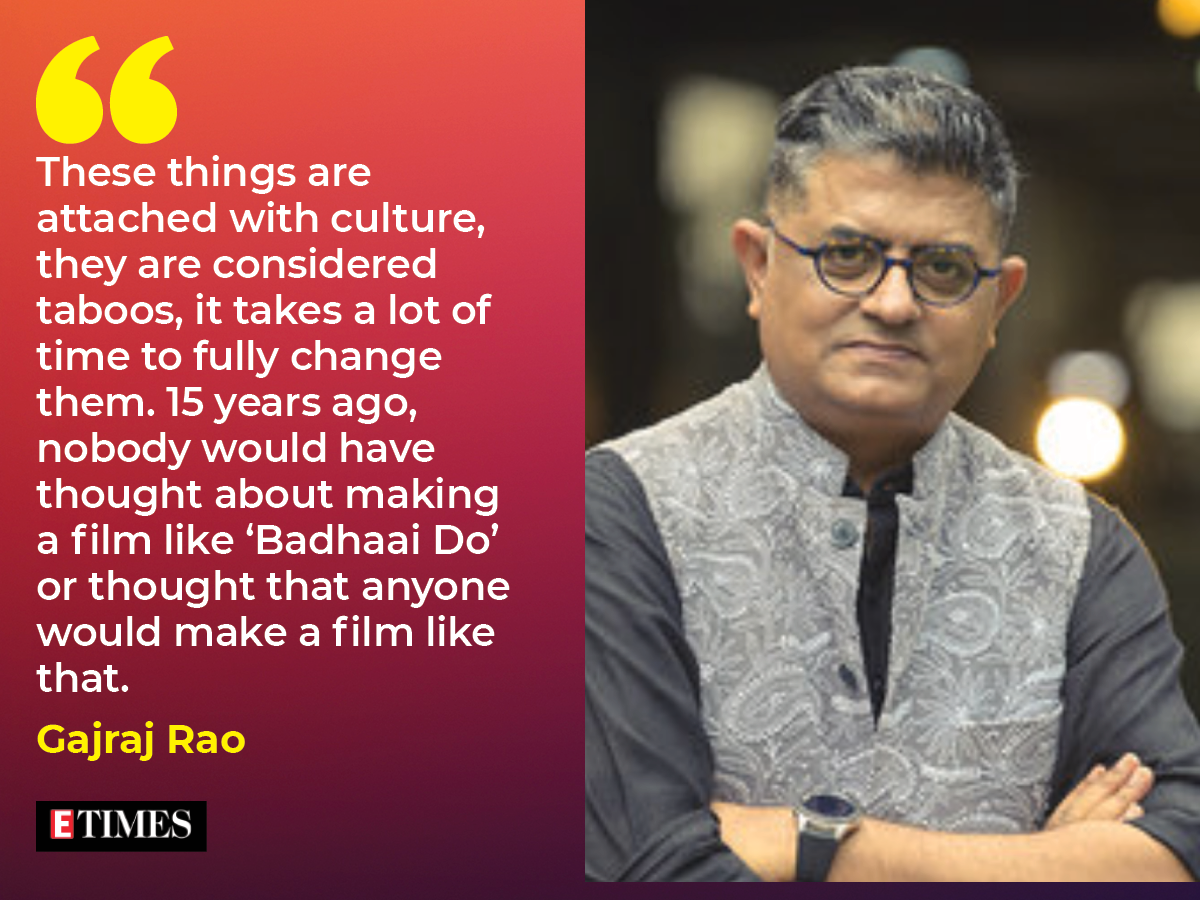
However, it might take 500 years to become mainstream, Gajraj adds. “These things are attached with culture, they are considered taboos, it takes a lot of time to fully change them. We have traditions like ghunghat pratha and baal vivah. Today we have banned baal vivah lawfully, but a 100 years back only child marriages happened. Today we look upon this with surprise, but at that time it was normal. 15 years ago, nobody would have thought about making a film like ‘Badhaai Do’ or thought that anyone would make a film like that,” he says.
Hitesh Kewalya notes things in Western countries have changed a lot for the LGBTQ communities. “Our film ‘Shubh Mangal Zyada Saavdhan’ was screened in the UK and a lot of non-Indians too watched it and liked it. And the fact that Article 377 was in the process of being removed laid the foundation of the film. Since society had started talking about it in the open, there was a need for this film and that’s why it was written. And I feel the better representation they see on screen, the more open they will be,” he says.
Sushant believes change in outlook can only begin within. “As human beings we like to see someone below us. If we see someone poorer than us we get a sadistic pleasure from that. I believe it’s just that we like to oppress somebody or a community, that’s why for so many years we have had caste system, class system, gender bias, orientation bias, fat shaming, slut shaming or shaming people who are divorced or have some medical problems, shaming people who are sexually active or not active, who are tall, dark, fair, thin, plus sized. And this is a crap mentality. So I think that once we work on ourselves, we will start understanding that gender and orientation are very natural things. Like you are a man or a woman, so are people trans genders,“ Sushant says.
Onir believes change can begin with introducing gender and sexuality discourse to children to make them understand how important it is to be inclusive and respect oneself and others for what their identity is. And like ‘Moonlight’ became the first LGBTQ+ movie to win an Oscar, Onir wishes someday the mainstream Awards in India also start empowering the community for telling their stories.




